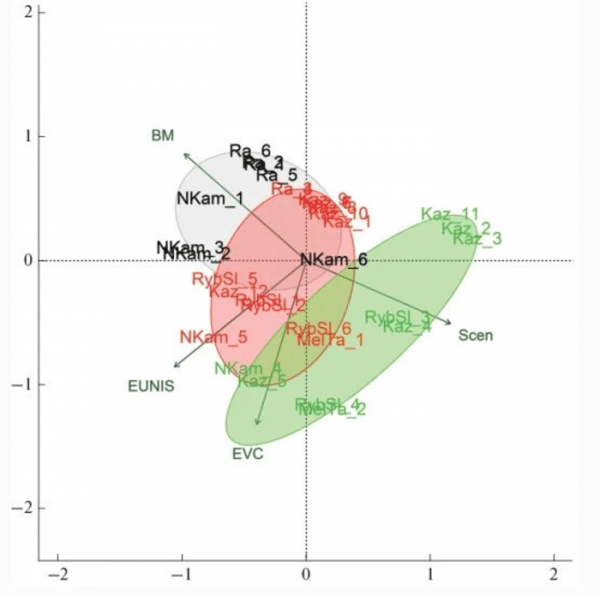Assessing the functional structure of plant communities and their productivity helps to determine the contribution of biological diversity and primary productivity to ecosystem services, the most significant of which are provisioning and regulating services. The former determine the amount of biomass produced in the future available for use as biological resources by humans, the latter – the formation of the habitat of natural and anthropogenically modified ecosystems. The assessment and reliable forecast of the productivity of meadow communities are largely determined by the approaches and methods used, most of which require laborious field and laboratory research. The use of information on the species composition of the plant community and its functional structure in determining the primary productivity can be expanded by using modern information databases of geobotanical data. The identification of practically significant functional groups of species (cereals, forbs and legumes) in the composition of meadow communities of hayfields and pastures and the determination of the dominant species make it possible to include indicators of biological diversity in the procedure of assessing the productivity of agricultural lands of pastures and hayfields.
The paper discusses the experience of predicting the value of the aboveground phytomass of meadow ecosystems using data on the functional composition and projective cover of species. The performed statistical analysis of the data confirms the assumption that there is a relationship between the community species composition and its productivity. Based on the main provisions of the dominance hypothesis, by constructing a statistical linear model, the possibility of predicting the value of aboveground biomass was tested based on the data on the species composition of communities and the abundance of dominant species and functional groups of plants, which act as universal evaluation criteria.
The team studied secondary meadows formed on the site of subtaiga coniferous-deciduous forests, deciduous forests and forest-steppe. With regards to anthropogenic load, the studied meadow communities are built in a gradient from not currently used, overgrown hayfields within the boundaries of the reserve, to active hayfields and pasture meadows. Using the Flora database which includes more than 18,000 plots, the JUICE v7.0 software was utilized to carry out the classification of communities and habitats. The investigated meadows are classified as vegetation classes of the Braun-Blanquet system (EVC), as well as habitat types of the EUNIS Habitat Classification [Davies et al., 2004]. To form an empirical training sample on ten of the 32 investigated trial plots in the peaks of the growing seasons of 2017–2019, the registration of the aboveground phytomass was performed. Statistical data processing and model building were undertaken in R software.
Read more at Kazan Federal University
Image: Ordinal plane in the axes of the two principal components. The main clusters of communities are highlighted in color; area encoding: Ra, Volzhsko-Kamsky Nature Reserve; NKam, Nizhnyaya Kama National Park; Kaz, environs of Kazan (Zelenodolsk District); RybSl, environs of Rybnaya Sloboda; MelTa, environs of settl. Mellya-Tamak (Muslyumovsky district). (Credit: Kazan Federal University)


